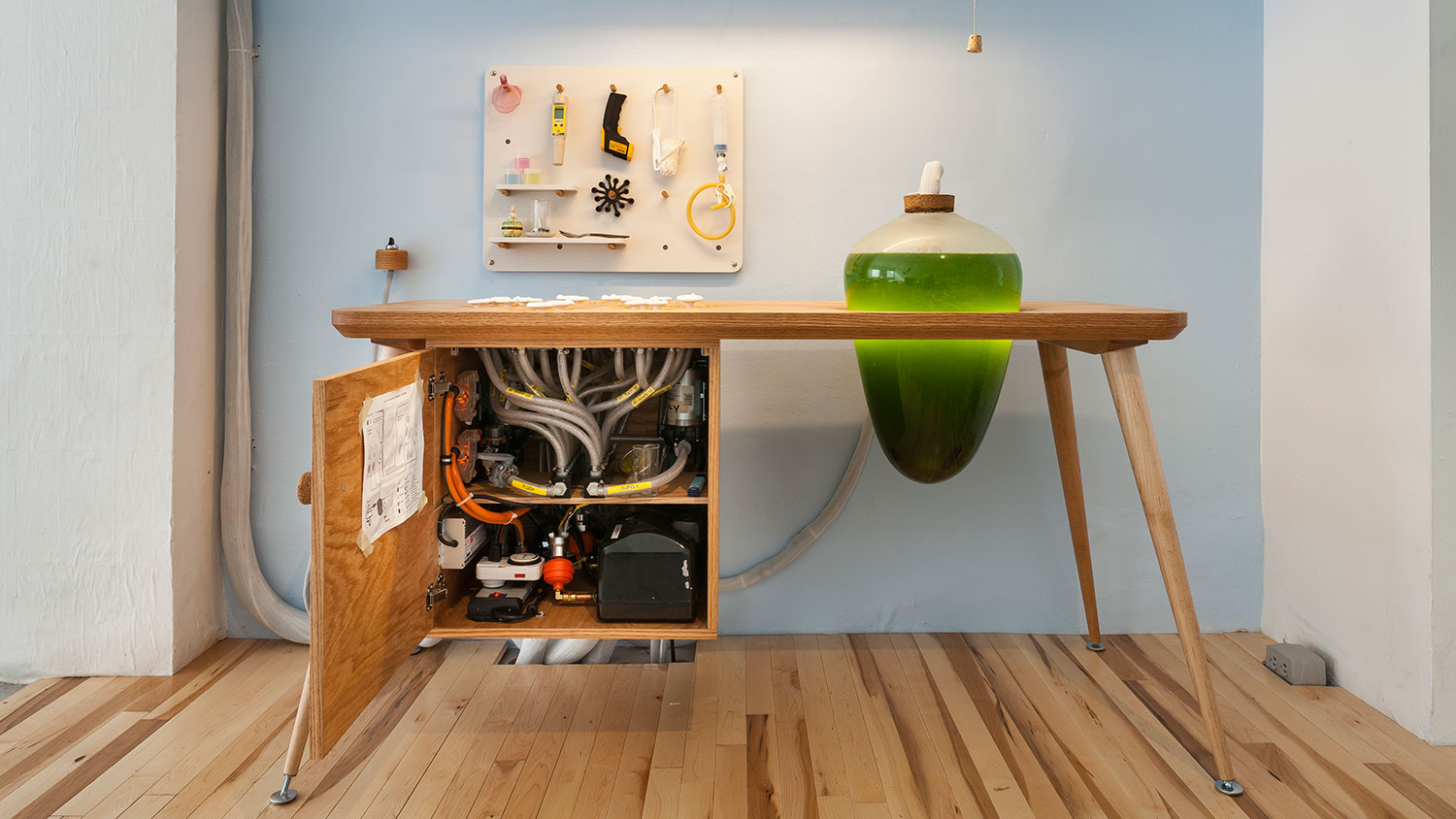Most furniture is pretty damn one-note. That chair? It just suspends a relaxed rear. A table? Wow, my food is totally not going anywhere now. Hey, lamp — do you do anything besides just glow? Luckily, architectural designer Jacob Douenias and industrial designer Ethan Frier decided that the lazy-ass desk could not only provide a flat surface for income-based drudgery — it could also house bioreactors that grow food without the massive carbon footprint of conventional agriculture.
It works like this: You open a drawer and get a slice of pizza, or swivel your chair to access the kale-salad filing cabinet. Right?
A new line of photosynthetic furniture is filled with spirulina—a tiny, edible bacteria […] The custom glass bioreactors use waste heat, light, and carbon dioxide from a home to feed the spirulina inside. Periodically, someone can turn a tap, empty out the green sludge, and eat it.
“They’re super nutritious,” Douenias says. “As much as half their weight is protein depending on how they’re grown.” Spirulina, colloquially known as blue-green algae, is already sold as a supplement in health food stores. But the designers see it as the perfect candidate for ultra-local food—something that’s possible to grow in the living room, without the energy requirements of the typical indoor garden.
Oh. Damn.



